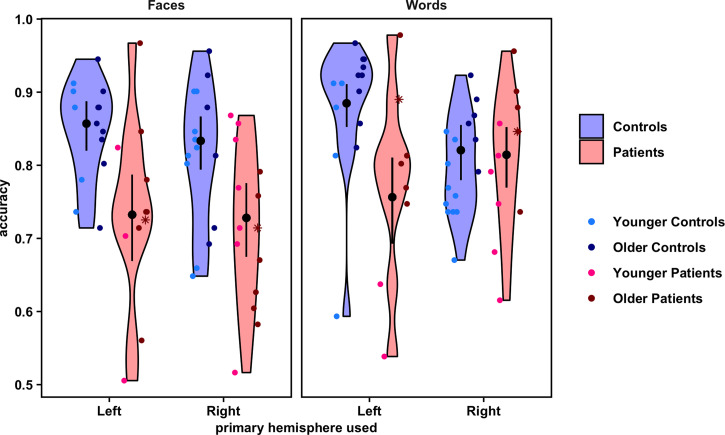Fig. 3.
Violin plots show the distribution of overall accuracy values on the face and word recognition tasks for each group and stimulus category, by primary hemisphere used. Overlaid point plots show the individual values for each participant. The black points show the estimated probability of correct trials per condition, and the error bars represent the 95% confidence interval of these estimates (back transformed from a logarithmic scale). To visualize any effect of age, individual participants' points are separated by the median of the age distribution for all participants in the study (younger versus older than 17.5 y), shown in different shades of blue (controls) and red (patients). Asterisks indicate the data for two patients in the sample who had their hemispherectomies completed/revised as adults. Points are randomly jittered to minimize overlapping data. Note: Axes begin at accuracy = 0.5 because cases in which a participant performed at or below chance on a task were excluded from the analysis.

